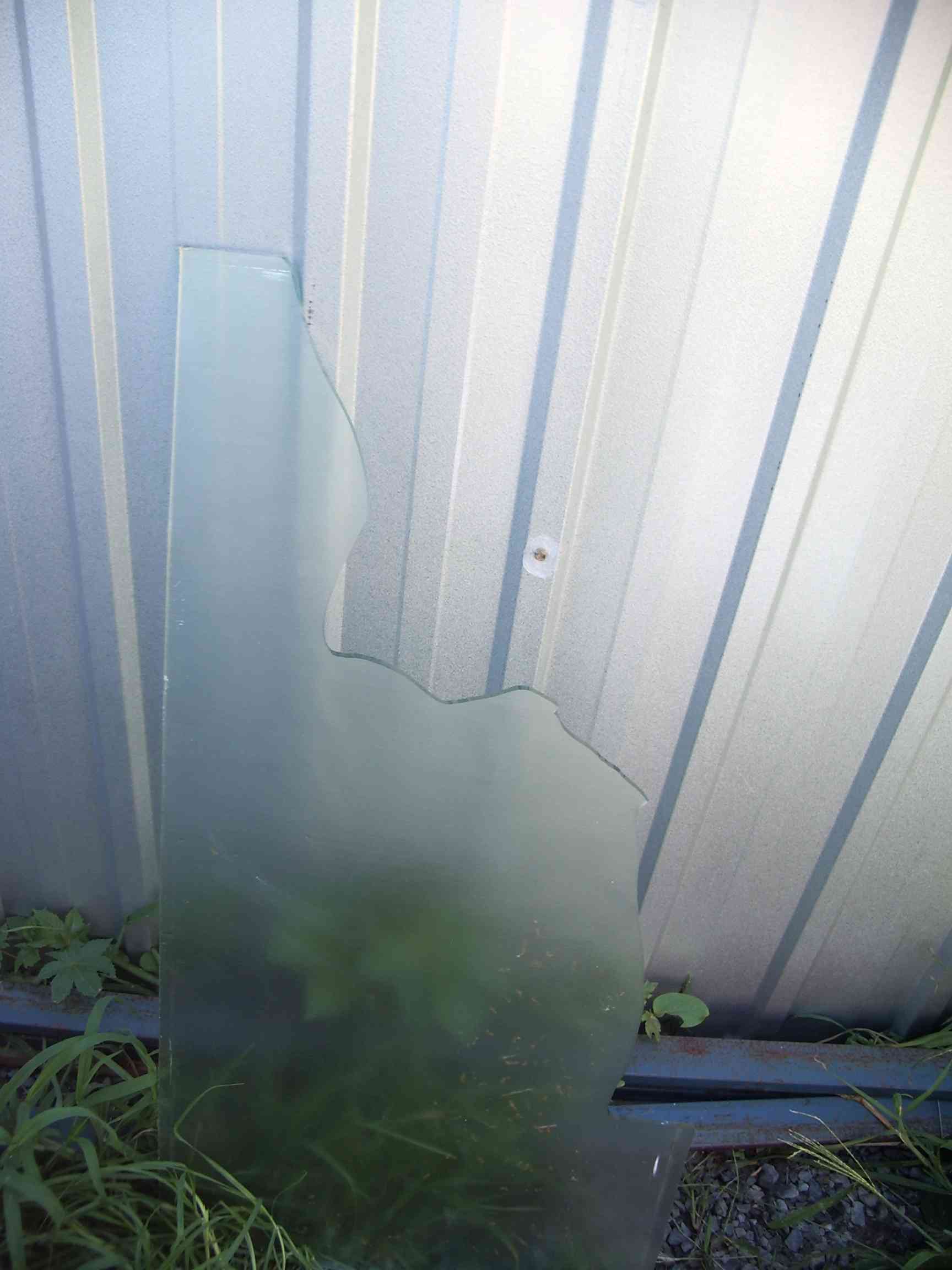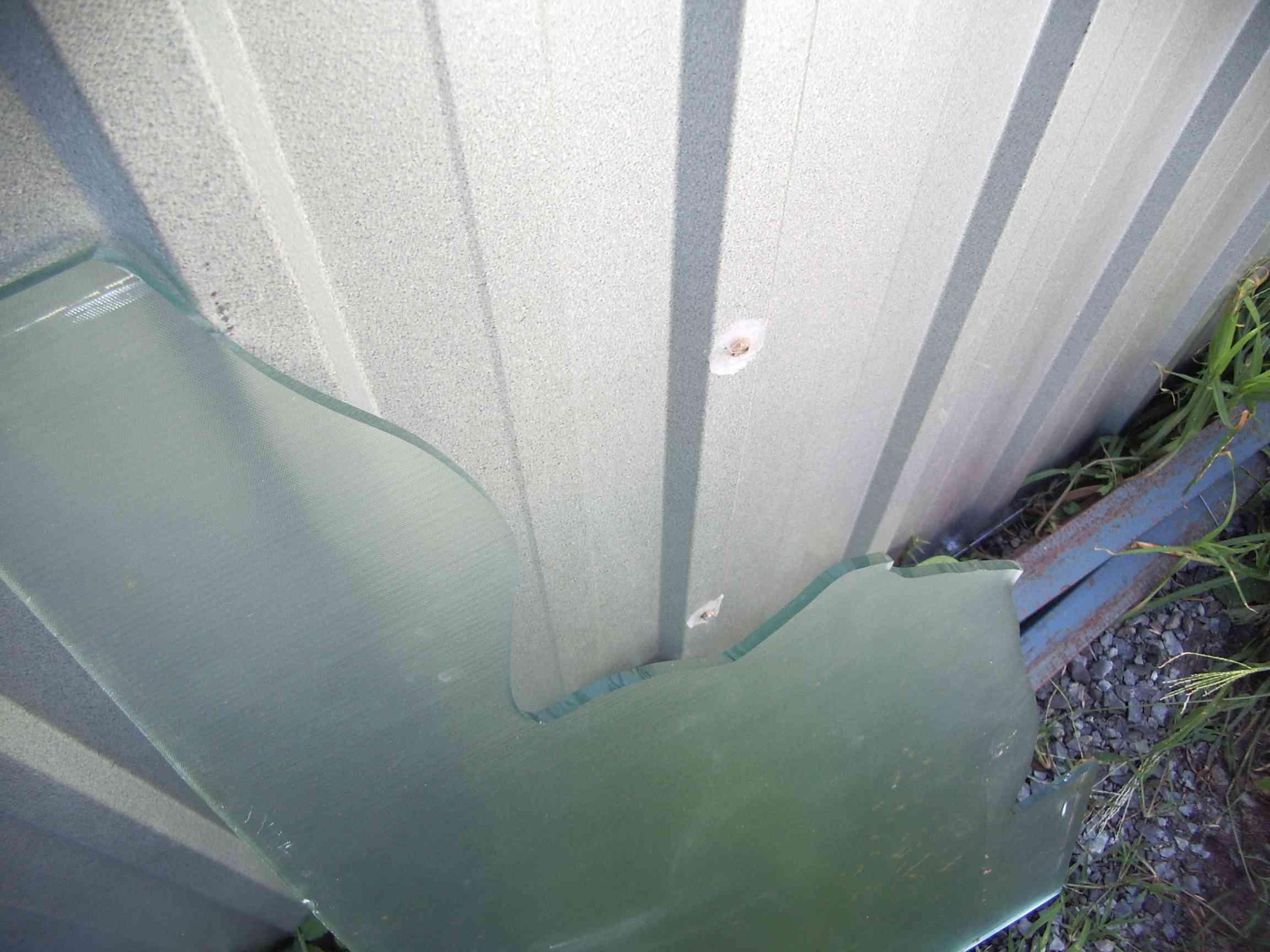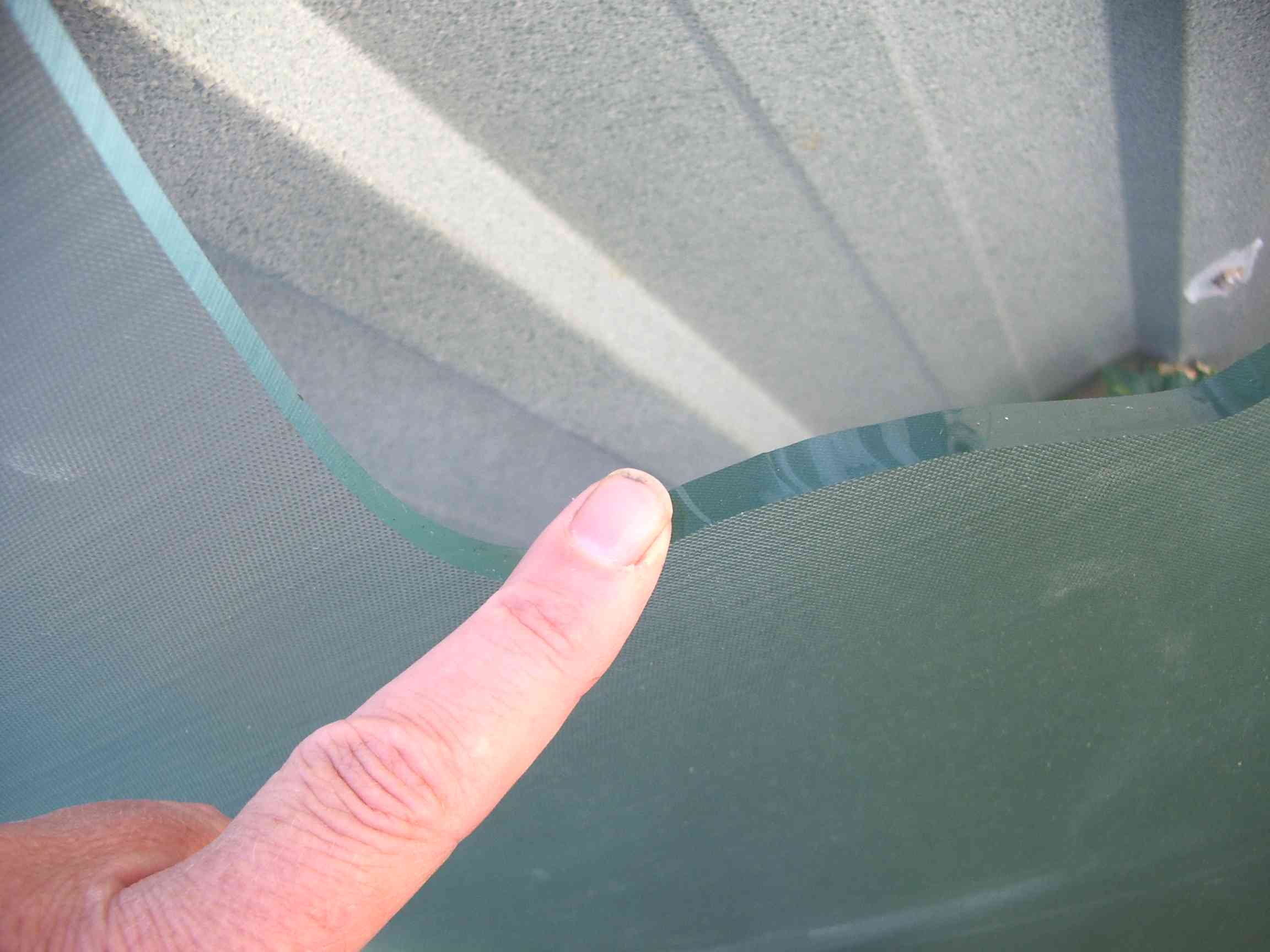The hidden art and science of cutting glass
by Ralph Klimek 2007
copyleft, no rights reserved!
abstract: how to cut new window glass, how to reliably cut old , used window glass. The physics of cutting glass.
Yep, its really possible. You dont even have to be a grumpy tradesman in a grey dust coat.
The Physics of fracturing glass.
How to cut glass, the truth finally revealed
Glass is a super cooled liquid.
Even though it has become to all intents and purposes very hard and
rigid, so rigid that it is brittle, at the molecular level
it is still a liquid because the molecules are in a highly disordered
non crystalline state. Eventually glass will truly crystallize
whereupon it will probably become opaque, but this may take until the
next aeon, no time real soon.
The disordered state of glass means
that there are no preferred axis or directions in glass. A propagating
crack will go where it will, or rather where a local stress
concentration directs it. It is this property that makes it possible to
"cut" sheet glass. It is not cutting at all, cutting is an act of
subjecting a substance to extreme shear stress beyond its yeild limit.
The act of cutting glass is to orchestrate the propagation of a crack
by creating an extreme tensile stress in the right place at the right
time...at the head of rapidly propagating crack.
There are two types of glass cutting
tool. There is the saphire or diamond tipped scratcher and there is the
cutting wheel, known in the trade as a Red Devil. The first tool
merely scores and scratches the surface of the glass. It is
useless! The Red Devil is a small wheel of hardened tool steel.
It appears to do nothing. The sharpened wheel hardly even scores the
surface of the glass yet it it the most effective tool for
cutting. The sharpened wheel, at the point of contact , exerts
immense compressive stress, well beyond the fracture stress point of
the glass. Deep into the surface of the glass, it causes micro
fractures aligned with the direction of the stroke of the tool. If
tensile stress is now imparted along the line of the tool brittle
failure must occur, and the line failure, the propagating crack will
follow the path of the sub surface micro fractures induced by the tool.
The micro fractures done to the glass
by the cutting wheel are surprisingly effective. The scoring line may
only just be visible. It can even happen that the glass will cut itself
along the score line just by a change of temperature.
The next trick is known only to
grumpy old glaziers. Watch an old fashioned glazier at work and
observe how she cuts glass in her hands as if it was paper, a good one
can trim a sheet of window glass while they are standing on a ladder.
After they score the surface, they will moisten a finger with spit and
rub the score line. The method to this madness is the effect of
hydroxyl ions on the silicon oxygen bonds at the head of a crack. The
hydroxyl ion effectively severs silicon oxygen bonds and the molecular
forces holding the crack together are now released. The
propagating crack is "greased" along and now very little tensile stress
will fracture the glass. Any source of alkaline will do, ammonia,
caustic soda, baking soda and even spit will greatly help in the
cutting of glass.
Old secondhand window glass is
notoriously difficult to cut straight. This is due to
weather exposure and many years of wind, birds and balls banging on the
glass it is allready riddled with micro fractures, and as a result the
propagating crack from your attempts to cut it appear to have a mind of
their own and allmost allways refuse to follow the scoring line.
The technique to deal with old glass
is to first polish it with a water based abrasive cleanser polish such
as White Lily, Gumption or similar. Polishing is actually a process of imposing
ever finer scratches onto the surface. Polishing the surface will
"confuse" a propagating crack. It will not follow then its own path but
confine itself to the major microfracture that the cutting wheel
induces. There will still be major microfractures due to aging
and the effects of abuse and you cannot polish them away. You
cannot bend the old glass along the score line as you can for new
glass. Old glass must be gently tapped with a small round hammer.
The handle of the Red Devil is a knob, which is just such a
hammer and has been crafted to have just the right amount of
mass. Tap the glass on the opposite side of the score line until
you see a small crack emerge. Whenit does move on and tap a few MM
along. By doing this you are creating a sequence of cracks that follow
the score line, as distinct from just the one crack for new
glass. When you have a complete line of these hammered cracks,
bend the glass and it will sever nicely. The edge is rougher and more
jagged then new glass but this generally is not a problem if it is
promptly dressed with a hone.
When new glass is scored and snapped
properly the edge is safe to touch, it is not particularly sharp or
injury inducing. Old glass as cut by the above method can have very
sharp and injurious edges and they must be dressed. I use a
diamond hone which makes short work of breaking sharp edges so
that you can run your finger along a freshly cut edge without injury.
Secondhand glass is never as strong
as new glass, so consider the application carefully. I wouldnt make a
large fish aquarium with old glass but things like display cases and
windows and picture frames are good uses of old glass.
The correct use of the Red Devil.
Clamp a guide board to the glass. You
must run the glass cutter against some firm straight edge and this
requires a firm hand. Press down with force. The right amount of force
does not result in a deep score line, a light score line that is just
visible is all that is required. The tool will make a particular
eeeeeeeeeek noise if you are doing it right. Too much force will result
in a crack going off to the wrong place. It really helps if the
glass is resting on a hard surface, I use a large sheet of heavy gauge
aluminum as a backing surface. Real glaziers use a felt like surface
but I think a hard surface gives better results, at least for me.
Immediately wipe the score line with
some mild alkaline fluid. Place the glass on some ninety degree angle
stock on its apex parallel with the score line and simply press down.
New glass will snap cleanly at this point. Old glass should not
be snapped this way, follow the above mentioned procedure and induce a
line of cracking with the little hammer.
I have built a double sided straight
edge that confines the path of the glass cutter. That way I need only
concentrate on applying downward force and do not need to steer the
path of the cutter as well. This makes life easy.
Red Devils dont last forever, glass is abrasive and eventually the
steel wheel loses its sharp edge and with it the ability to induce the
sub surface micro fractures needed for clean cutting.
Diamond hones for quickly dressing down the sharp edges can be obtained
from gun and sports shops where they are sold for sharperning knives
and fish hooks.
Cutting of circles and large holes.
Yes it can be done. You can purchase
a circle cutter, its a cutting wheel on a compass with the pivot held
to the glass with a suction cup. having made the circular score tap the
inner circle until a complete circular crack emerges. New glass may be
tapped with a soft blunt object and a very clean circle will fall out
leaving a circular hole! No such luck with old glass, but old glass
circles can be cut with the hammer method by removing the outer edges
as waste. I have not been able to cut holes in old glass. I have
seen glaziers use a large suction cup to lift out the inner circle when
cutting holes for window mounted extraction fans.
Always wear eye protection when
cutting glass, sometimes old glass can shatter with great alacrity in
unique and surprising ways. Glass is really quite safe, but the
real reason for wearing eye protection is the human propensity to rub
ones eyes. If you have been cutting glass than your fingers will be
carrying very fine invisible glass shards which you might transfer to
your eye. This is not good. Glass cutting is a precision operation so
keep your work area clean and your hands clean to manage the hazardous micro
shards.
Tools required.
Red
Devil wheel cutter, water based (not silicone or oil)
polish compound (eg White
Lily), diamond hone, cutter guide, angle stock and sturdy base,
spirit based marking pen (overhead transparency pens will write on
anything) and a brush to clean your work area, and an enclosed bin
as Glass shards are attractive to young children; so dispose of them
promptly.
 |  |  |
| The Red Devil and an unbranded circle cutter | cutting wheels
close up | use a diamond hone to dress freshly cut glass edges |
A practical cutting guide
You should make yourself a cutting guide if you intend doing this more
than once. My cutting guide even features a rubber backing to stop it
slipping on the glass surface. The shims are adjusted to let the Red Devil travel freely.
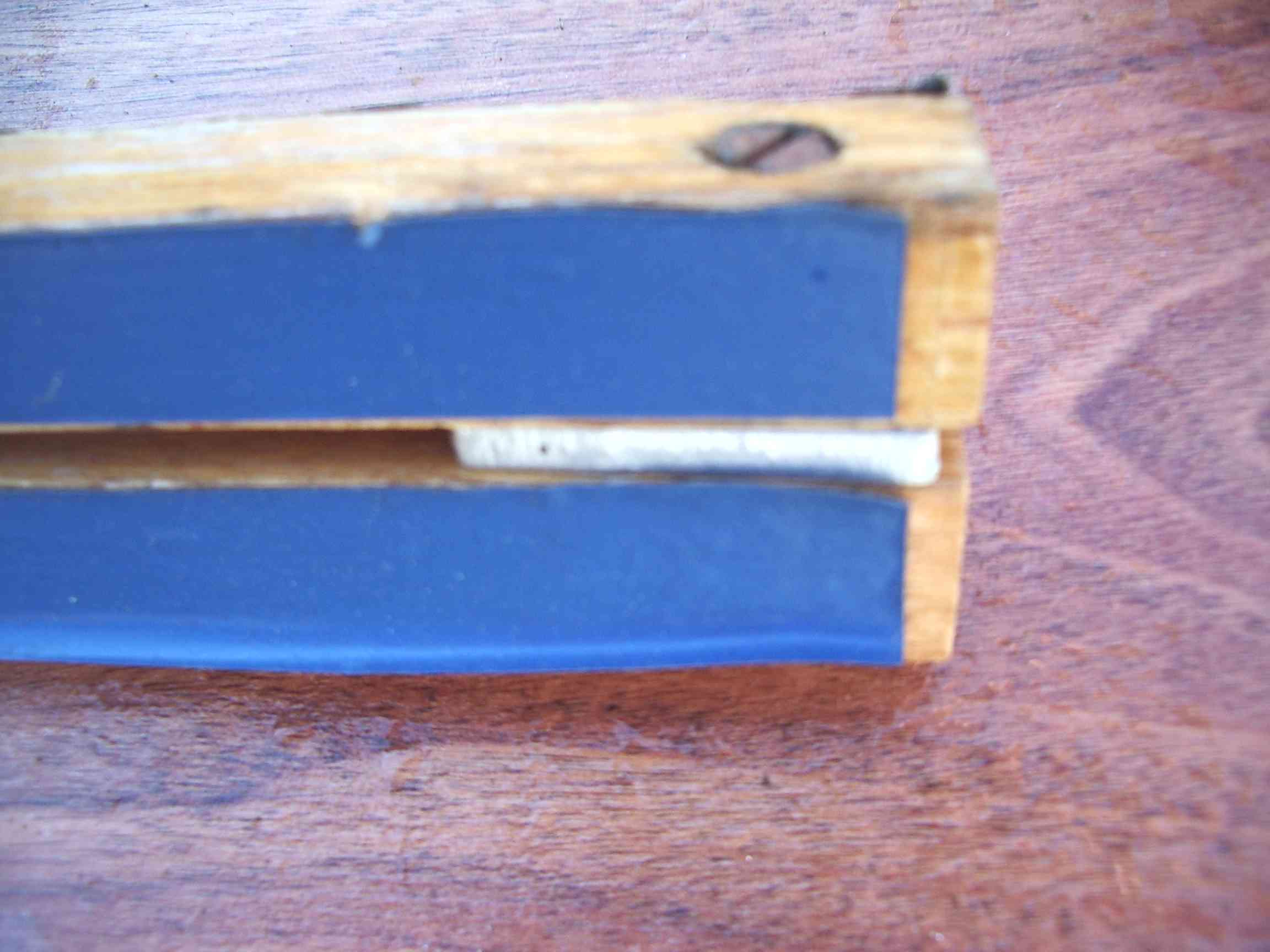 | 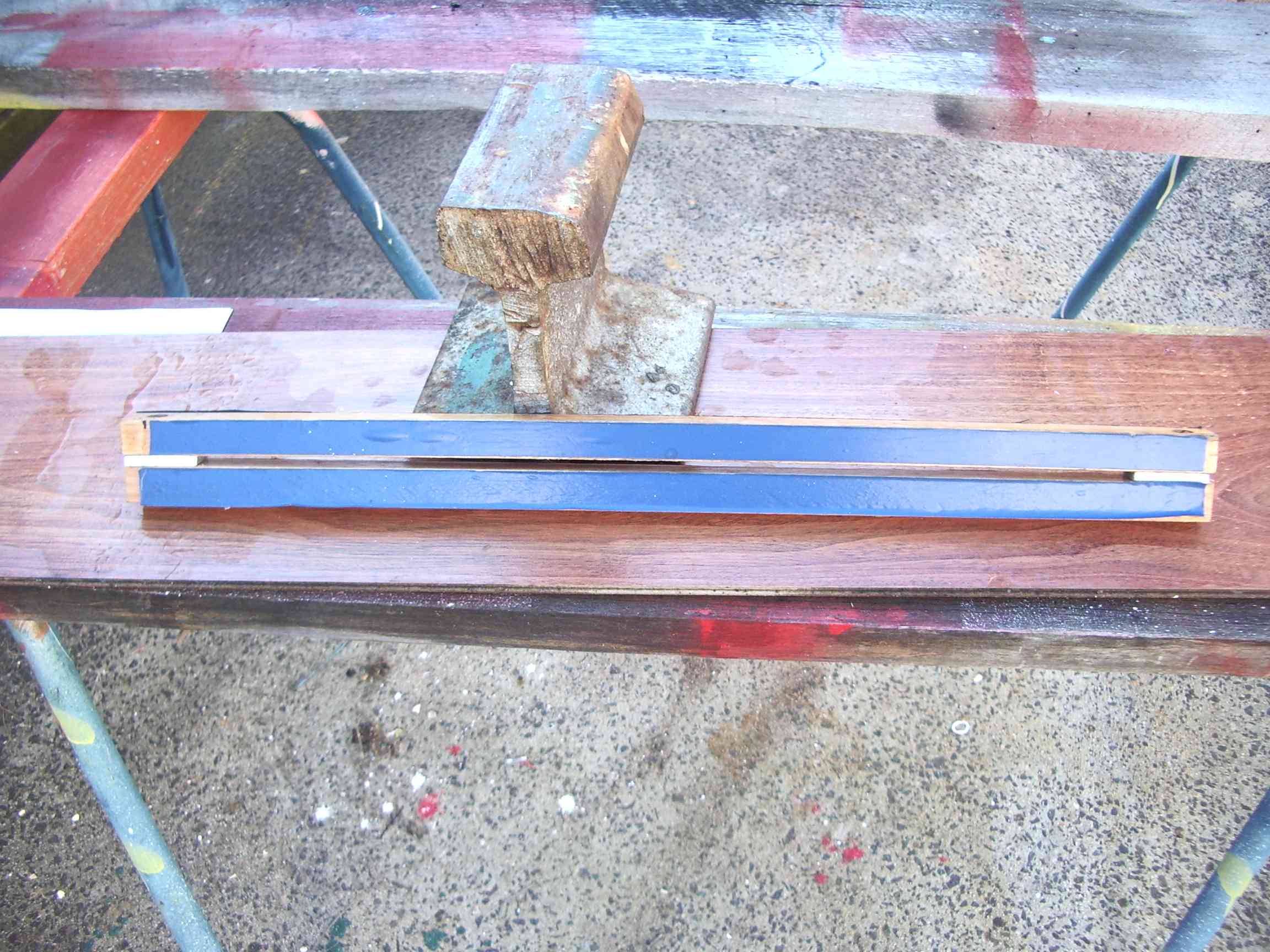 |
| shim detail | top view |
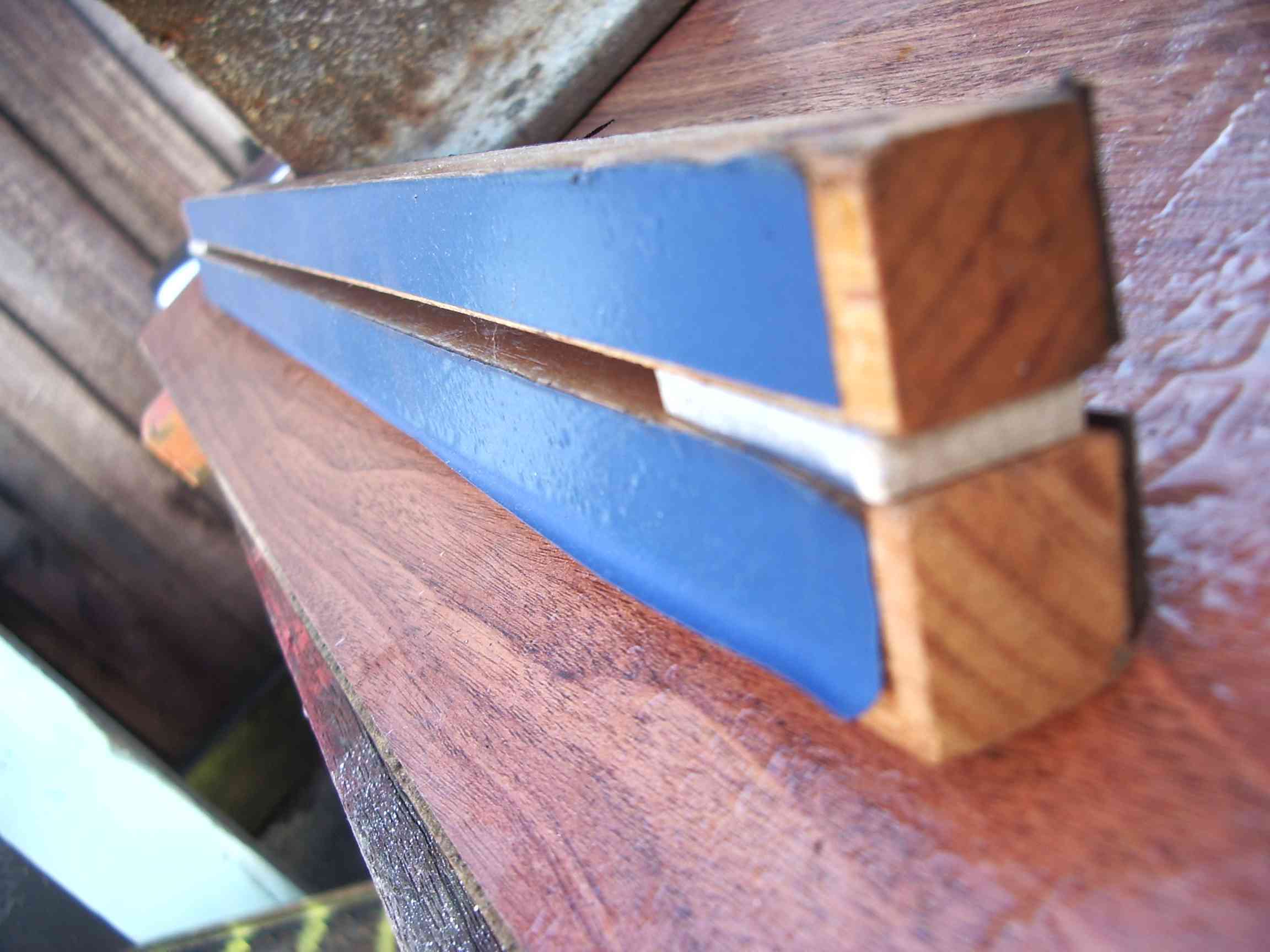 | 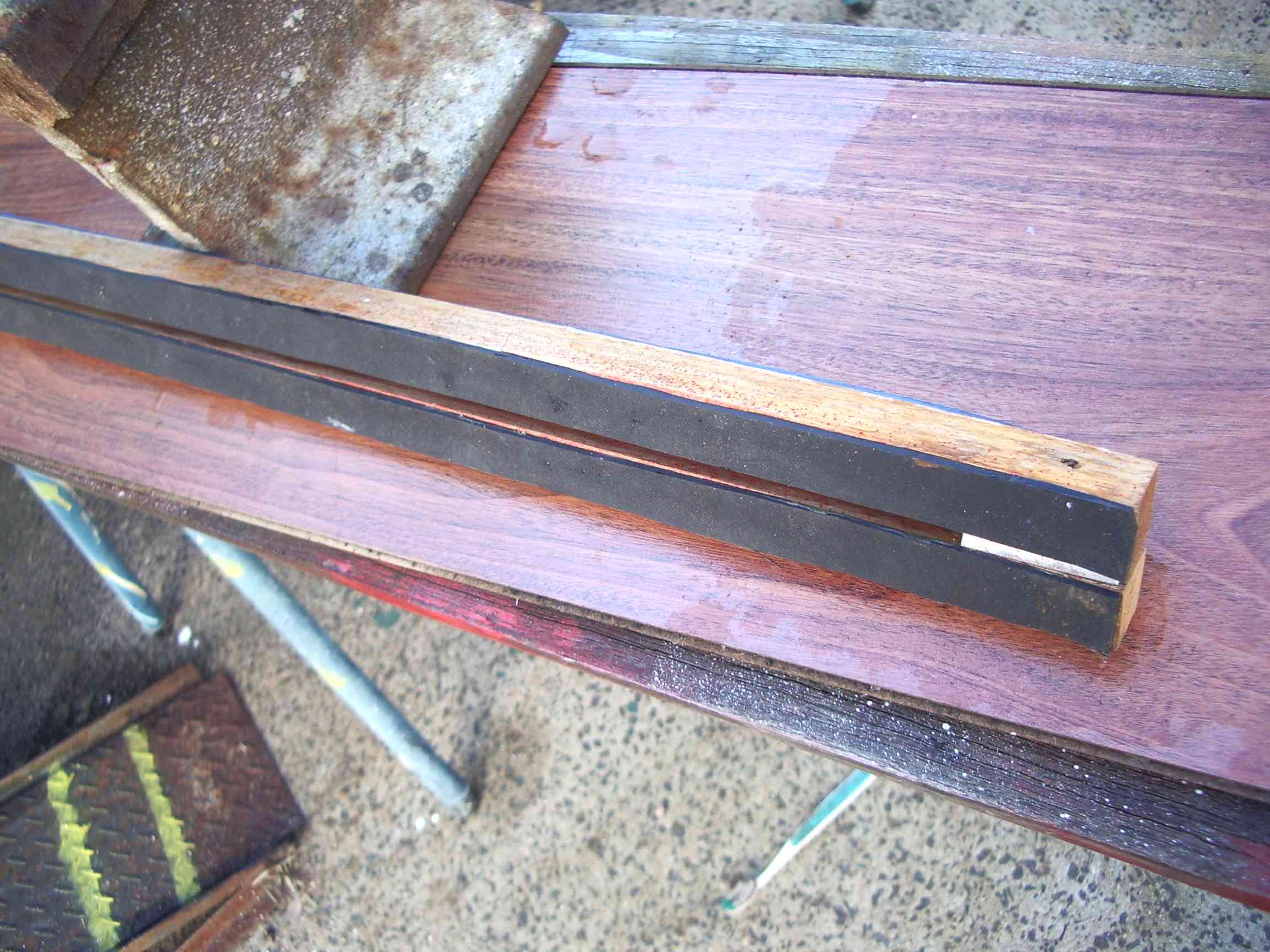 |
| put shim stock here to permit devil to slide freely | rubber strips stops guide from sliding on glass |
Warning! never attempt to cut
tempered or so called hardened glass. It will explode in your face in a
most unpleasant manner. Hardened glass has been tempered in such a way
as to induce a large amount of surface stress. There is a large amount
of strain energy which the Red devil will unleash.
How was this glass cut ?
This
was a nice slab of hideously expensive 10mm "frosted" glass that I had
recovered from a work dumpster, taken to repair a damaged aquarium.
No technique at my disposal could have formed a shape like this
in this material. Zoom into the images and you will see that the cut
edge of devoid of conchoidal fracture lines and there is no evidence of
scoring near the surface. The cut edge is completely blunt and
wont cut my finger.
The answer is, this glass was cut by
the sun's direct heat. This was left lying outdoors on top of
some insulation material, supposedly to "protect " from harm.
During Melbournes' last heat wave where dry air temperature
reached 43 degrees direct sunlight got to this slab and it was cracked
by thermal stress . This was most annoying. So there is a lesson,
dont store your heavy glass in direct sunlight were air cannot
circulate to distribute the heat.
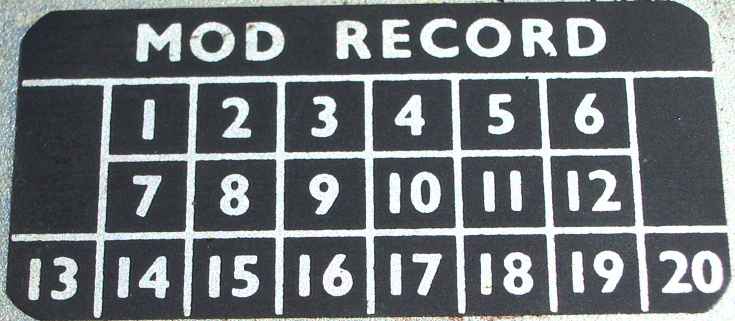
page created
added extra content Thu Jan 3 18:39:52 EST 2008
fixed formatting Fri Feb 26 13:31:17 EST 2010










